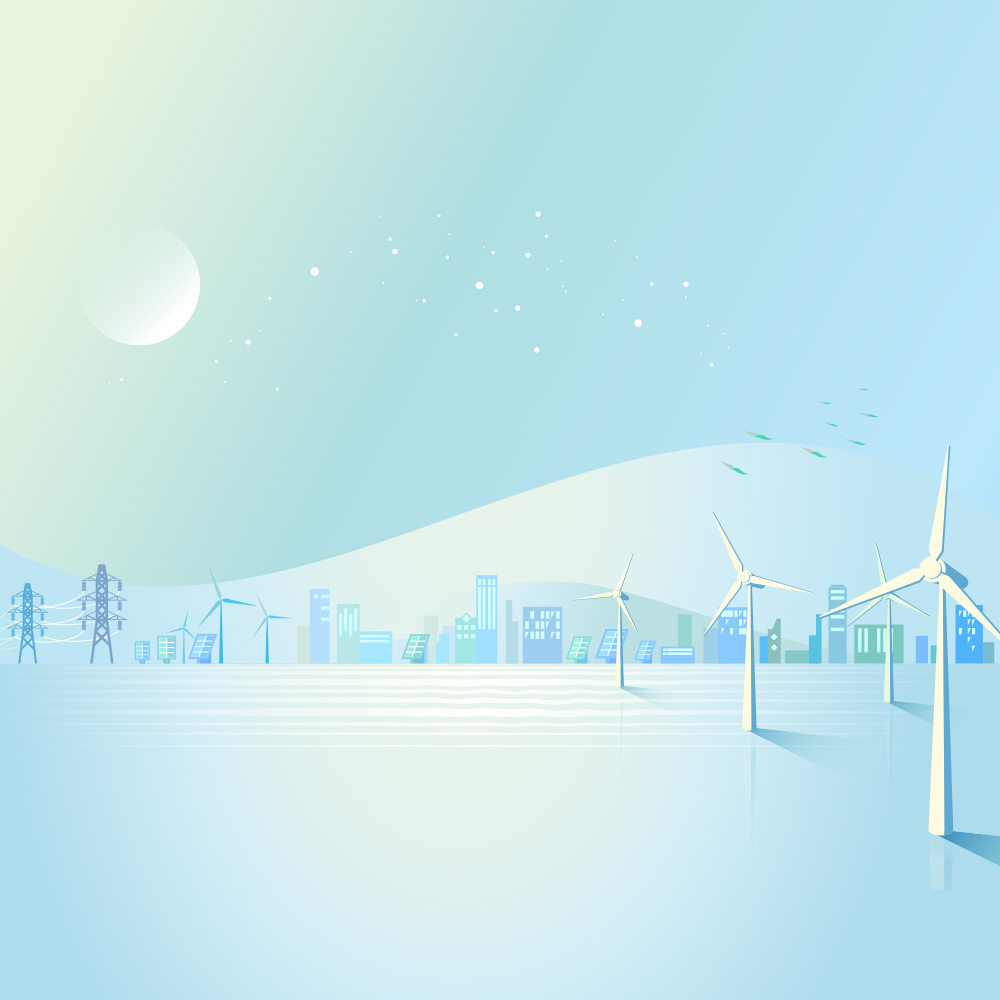Kirigami-inspired solar panels
The ancient art is inspiring the design of solar cells so they can change shape to catch the sun
Increased wind intensity and regularity, along with low visual impact, are driving the deployment of offshore wind energy.
There is a renewable energy available night and day. It is invisible. And it can be found in the sea. As already anticipated in the article's title, it is offshore wind energy. This green power is one of the fastest growing in recent years. The latest demonstration is the auction of coastal water rights held by the state of California in the USA. It is estimated that the area, which covers 135,000 hectares, could power 1.5 million homes. Much of this area is deep water that will require new approaches, such as floating offshore wind.
This article covers topics like:
First, a basic definition: offshore wind energy uses wind turbines in coastal waters that can be attached to the bottom, both with fixed or floating structures. The most common models feature blades and a horizontal axis, i.e., the modern version of the traditional Dutch or Don Quixote’s windmills.
This type of energy could overtake onshore wind by 2030 according to IDAE estimates. With an increase of 48.5 % in the last decade, the speed of implementation of offshore wind energy and its contribution to renewable energies have been impressive. However, it is a relatively young type of energy. Offshore wind is barely thirty years old since the first offshore wind farm was installed in 1991 in Vindeby, Denmark. Today, almost half of the world’s installed capacity is in China.
Do you like what you see? Download the PDF here
There are several explanations for this warm welcome. Offshore wind combines many of the advantages of renewable energies. Firstly, in terms of sustainability or reduction in the use of fossil fuels. Secondly, it shares the characteristics of onshore wind, such as its high energy conversion capacity, which ranges from 20 to 40 %. However, it also offers some specific advantages:
Of course, this energy is not without its challenges, such as installing the turbines in a more hostile environment like the sea, often at great depths. But, as we will see next, even these barriers are being overcome thanks to the latest technological breakthroughs.
As young as this renewable energy is, plenty of approaches have been tested over the past three decades. This includes the type of turbine, but especially how the structure is attached to the seafloor. There are two broad categories:

Until recently, offshore wind turbine platforms (FOWP) were always installed with a foundation fixed to the seabed up to 196-feet deep. This required various types of foundations, summarized as follows:
While offshore wind energy is highly efficient, much of the world’s coastal waters are deeper than advisable for a fixed foundation. As a reference, the deepest installation at present is a 190-feet-deep jacket platform in Scottish waters. How to overcome this limit?
Since 2007, some prototypes of floating offshore wind turbines have been installed, allowing them to operate at much greater depths. You can read a more detailed explanation here, both of its typology and its advantages, but for the moment, the following primary modalities have been proposed:
Offshore wind power is not the only renewable energy that can be obtained from the seas. If you want to learn about other alternatives, you can read this article on wave and tidal energy or this one on blue or salinity gradient energy, which leverages the power released by the convergence of fresh and saltwater.
Source:
All fields are mandatory.
Read the most discussed articles
{{CommentsCount}} Comments
Currently no one has commented on the news.
Be the first to leave a comment.
{{firstLevelComment.Name}}
{{firstLevelComment.DaysAgo}} days ago
{{firstLevelComment.Text}}
Answer{{secondLevelComment.Name}}
{{secondLevelComment.DaysAgo}} days ago
{{secondLevelComment.Text}}